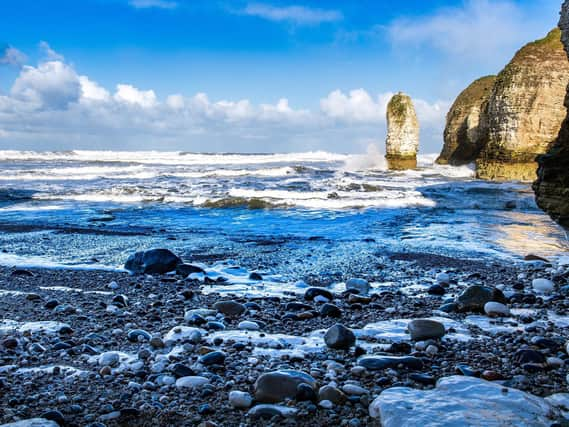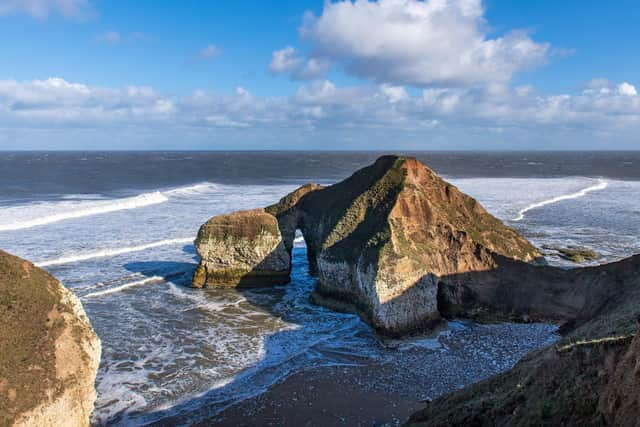Serene sea stacks at Selwicks Bay on Yorkshire Coast's Flamborough Head


Waves lap at a sea stack in Selwicks Bay at Flamborough Head on the Yorkshire Coast
The scene is one of serenity - but not for long perhaps.
Because over the next few months crowds will be returning to the beaches of Yorkshire.


Advertisement
Hide AdAdvertisement
Hide AdSelwicks Bay lies on the Flamborough Headland, situated at the foot of high cliffs.
The sand and pebble beach stretches for around three to four miles and as the tide goes out a rocky shoreline can be seen. The 400-foot chalk cliffs around this part of the coast provide a nesting place for a large number of birds, making it a top spot for twitchers.
According to the Yorkshire Wildlife Trust, Flamborough Head has one of the most important seabird colonies in Europe.
In summer the area’s cliffs are packed with tens of thousands of breeding auks, gannets, gulls and puffins.
Advertisement
Hide AdAdvertisement
Hide AdThere are also views out over Bridlington Bay and a spot nearby has been home to a lighthouse since the 17th century. A lighthouse was first built on the Flamborough Headland in 1669 but was never lit.
The current lighthouse was built in 1806 and acts as a waypoint for deep sea vessels and coastal traffic as well as marking the Flamborough Headland for vessels heading for the ports of Scarborough and Bridlington.
Another nearby attraction, the Drinking Dinosaur - named so because of its shape - is also a destination for tourists and locals.
With the archway providing a break in the rockface, the remaining shape bares a subtle resemblance to one of the creatures of the prehistoric world craning its neck to drink from the sea.
Advertisement
Hide AdAdvertisement
Hide AdWeather and erosion can create caves, arches, stacks and stumps along coastlines.
In the case of stacks - a tall column of rock such as that pictured above - they are what remains when an arch collapses, separating it from the headland.
The stack will be attacked at the base, weakening the structure to a point where it will eventually again collapse to form only a stump.
Technical details: Nikon D6, 24-70mm lens, exposure of 1/500th second at f8, ISO 320.